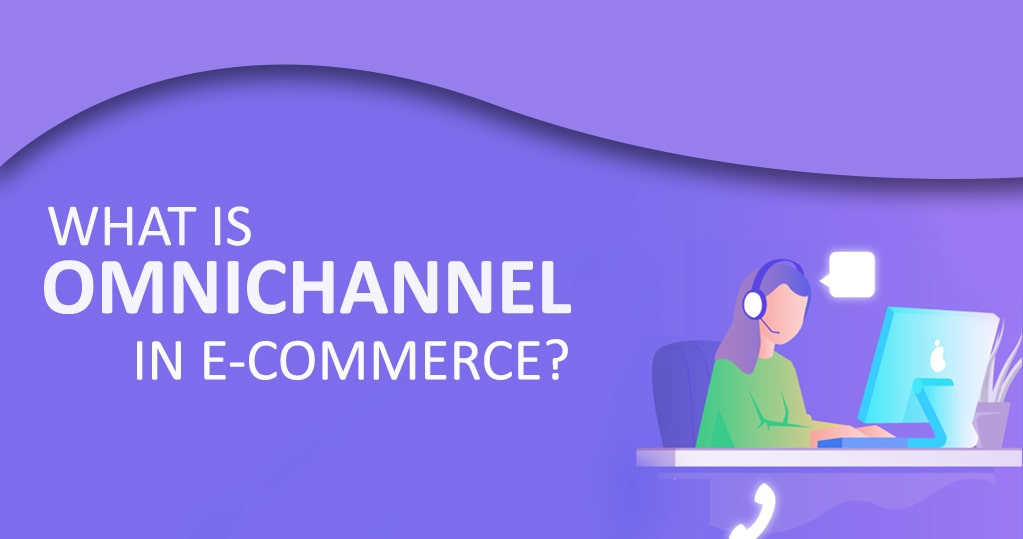Omnichannel ecommerce is a united ecommerce experience for online shoppers, irrespective of the device, or the platform utilized. Unlike before, the ability to touch and feel a product before purchasing is of the least concern today. Instead, brands reach over the consumers, their social media presence, and so on are what matters the most. Although Gen Z is completely becoming comfortable with ecommerce, the older generations are also changing the way of shopping in recent times.
Omnichannel in ecommerce is a multichannel mode of selling that focuses on offering a seamless purchasing experience to the consumers, irrespective of the devices, or the platforms used by them. The major difference between omnichannel selling and multichannel selling is that omnichannel selling lets the sellers integrate authentic channels in the store’s backend. Multichannel selling refers to the selling of goods and services on multiple online channels such as marketplaces, online stores, and social media platforms. On the other hand, omnichannel refers to sellers having both, physical as well as digital presence.
Multichannel and omnichannel are two terms that are often misinterpreted or we can say, misunderstood. However, now that you are clear with both the terms, you are ready to move on with our topic for today. As you have read, in this blog, we will be discussing everything about omnichannel in ecommerce. We are not just covering the answers to what an omnichannel in ecommerce is, but are also covering other related aspects of omnichannel you must know before stepping into omnichannel selling in ecommerce.
Omnichannel in Ecommerce

The prefix Omni in omnichannel refers to a Latin word, Omnis which means all or every. Although the word omnichannel lays a false image of covering more number of channels, the difference between omnichannel and multichannel is way above just numbers.
An omnichannel approach in ecommerce implies that there is integration between product distribution channels, product marketing channels, and the communication channels in the backend. For instance, if you have contacted the customer service team of your mobile SIM provider, you might have experienced that the representative of the customer service has access to your previous records easily.
Another example of omnichannel is that it allows consumers to browse products from a website using their desktop, choose the product to be purchased using a smartphone or tablet, and purchase the same from a physical store. Therefore, an omnichannel in ecommerce provides the consumers with multiple options to communicate as well as purchase products throughout multiple channels
How does omnichannel work in ecommerce?
Omnichannel considers your consumers as the core of selling instead of making it products-centric. With omnichannel, consumers can purchase products from wherever they are located. In short, omnichannel bridges the gap between different sales and marketing channels in order to build a unified and integrated ecommerce experience. Now the question is; how does this omnichannel concept work in ecommerce. Below is a step-by-step procedure by which you may easily understand the process:
- A consumer visits an online website, enters the buying cycle by adding their desired products to the cart. However, instead of completing the purchase, the consumer leaves the website.
- They get a retargeting email with some lucrative discounts which are often ignored.
- During the same time, the consumers get to see ads for the same products that they wished to purchase along with the discounted price tag on their social media handles such as Facebook, Instagram, YouTube, and Pinterest.
- In the case of non-engagement, the omnichannel uses apt CTAs to highlight social marketing efforts.
- With successful marketing, the consumer comes back to the store and completes their purchase with a great consumer experience.
These steps are only a representation of how omnichannel may work. Omnichannel in ecommerce is not a plain tactic; moreover, it is about being everywhere for your consumers, at all times. After all, that’s what attracts more and more consumers hopping from one device to the other, to the ecommerce stores.
The benefits of omnichannel in ecommerce
It promotes sales
As per experts, omnichannel shopper, on an average, spends about 4% more in and in-store shopping. When it comes to online shopping, the percentage increases up to 10% than the consumers using single channels for online shopping. In fact, studies have found that over 17% of consumers who have returned to a store through omnichannel marketing tend to spend more within 6 months.
It establishes a boundless presence

Studies have found that about 67% of shoppers had started shopping from one device and ended up completing the purchase from another device. Moreover, it is proven that over 63% of shoppers use multiple channels to purchase products. Consumers nowadays tend to use multiple channels to research various products, compare brands, read reviews, and view ratings before making a purchase. And, omnichannel in ecommerce can help in establishing such a boundless presence across various channels.
It encourages consumer retention
When it comes to ecommerce, along with seeking new consumers, the sellers focus on their already existing consumers to sustain their loyalty towards the business. Many major brands have admitted that when shifting focus from consumer acquisition to consumer retention, the rate of growth was evidently higher. Omnichannel experience in ecommerce helps businesses provide a seamless consumer experience that drives consumer loyalty and encourages consumer retention.
Ways to Create Incredible Omnichannel Strategy for Ecommerce
Now that you are aware of the benefits of implementing an omnichannel strategy in ecommerce, you must know the strategies for the same. Here are a few pointers you must consider to create an incredible omnichannel strategy:
- Know your consumers
- Pick the right channels
- Define a clear purpose of each channel
- Link all the selected channels
- Manage and maintain all your channels
Summary
Omnichannel is the next powerful concept in the ecommerce industry. Technologies have already advanced, providing us with many resources to implement the omnichannel strategy in the ecommerce business. Businesses are no longer confined to a physical or an online store. It is time for enjoying the best of both worlds. The question is, are you prepared for this enormous shift?








